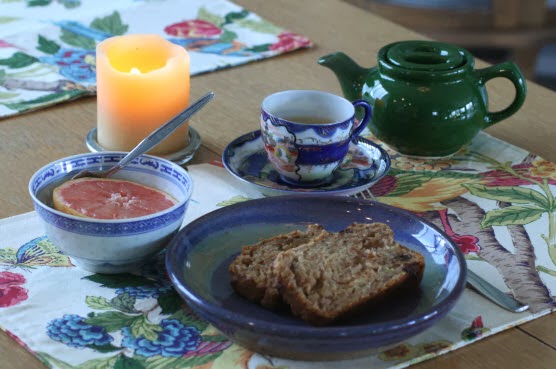Tea cup by Steve Sanchez
A very kind friend recently gave me these tea cups by artist Steve Sanchez. I am blessed with generous and thoughtful friends! Love these cups. The wood firing makes the coloring and patterns so interesting! The thumb impression makes a nice hand hold, and also yields an asymmetrical form (visual interest). These cups hold a nice amount of tea - not so much that the tea goes cold before I can drink it. I also like the thickness of the rim. Again, it's a balance of not too thick or thin.
Look at the interesting pattern in the bottom of the cup. I believe this is a result of the wood firing. It's golden and glittery and reminds me of tea leaves.
Functional artwork!
I have not (yet) had the pleasure to meet artist Steve Sanchez, but I am now a fan of his work and look forward to seeing more. Other works by this artist can be found at the Jasmine Pearl Tea Merchants.










.jpg)
.jpg)












.jpg)


